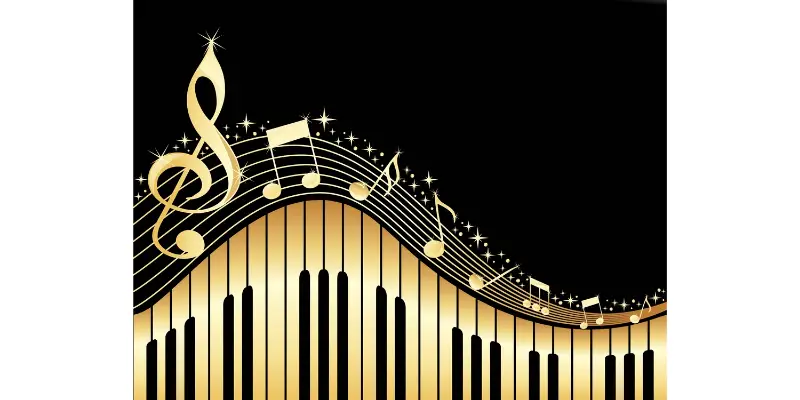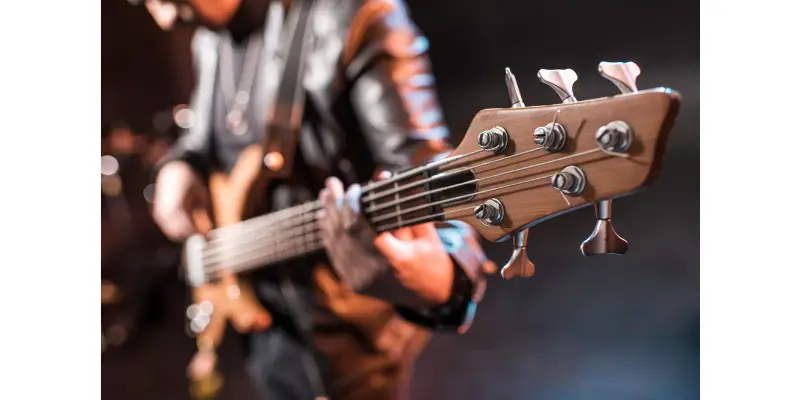Disclaimer: This post may contain affiliate links, meaning we get a small commission if you make a purchase through our links, at no cost to you. For more information, please visit our Disclaimer Page.
D audios are sounds that emulate movement by altering tone and frequency in the left and right speakers. The D stands for dimension because, in the beginning, it was the 3D audios where the use tracks and sound that involves the three dimensions.
Table of Contents
What Is D Audio?
The class of D audios is an alteration of the sound to improve the quality of the sound. However, this alteration can be minimal; thus, there are different types of D audios according to the sound variation and the creation process.
The basis of the D class audios is to improve the user experience by using different dimensional spaces. Actually, this technique of multidimensional sound is widely used in cinematography to immerse the public into the film.
This is what people know as a surround sound system, and this class of D audios was the first platform that mixed the audio for the different dimensional space. However, in the beginning, it was made for the three-dimensional spaces, but the D audios are in constant development to enhance the audio experience.
Now, the different variations of the D class audios are mainly altered by using effects. It is known that it is not more than three dimensions; however, producers use varied techniques to improve the sound or music experience.
What are 8D and 9D audio?
8D means eight directional and not dimensions. An 8D audio uses techniques that make a surround effect on average stereo audios by using echoes; this illusion makes the listener believe the sound comes from different directions when it is just a simple sound effect.
The 8D uses effects and techniques to trick the brain. These effects are used to simulate live music; as a result, the listener will feel immersed in the music. For example, 8D audios combine echoes in left and right speakers using different frequencies in each speaker; this is known as the binaural effect.
The ears process the sound individually, and this “sound” is combined in the brain as electrical signs. Therefore, when two sounds present different tones using even a minimal difference in the frequency, each ear will process the tone differently, mainly when one ear process one sound and the other ear the other sound.
This binaural effect for music or video sounds is more perceptible when the listener uses earphones. That is the reason why many videos recommend using headphones to enhance the audio experience.
The 9D audio
The 9D is almost the same as 8D audio, but it has some improvements. First, let’s remember that 8D audio uses echo techniques to create the effect of sounds coming from different places. Thus, the 9D audios files follow the same idea.
The 9D audios can be seen as the continuation of 8D audios. Both follow some features that characterize them as multidirectional audios. These are the binaural effect, reverb, and stereo panning.
Most of these multidirectional audio files use standard stereo files and transform them into surround using these features. Nowadays, it is famous the 9D files, and there is plenty of videos that use these techniques to engage the public and make them feel more connected to the music.
Even when the 8D and 9D audios are somewhat famous, there is a controversy regarding how healthy it is to listen to music with these effects. However, listening to 8D or 9D audios is not dangerous when they are made in a specific range. Thus, this is not something to worry about; most songs that use these effects are produced in a safe range of 85DB or less.
What is 16D audio?
The numbers keep going on, I start talking about the 8D audios, and now it is time for 16D. The D class is significantly extended, and the change can be minimal; however, each variation applies the techniques differently.
The 16D sounds use individual audio tracks and combine a binaural effect to trick the brain and make it believe that the music is coming from different directions. While it may seem similar to the 8D or 9D audios, the 16D audios files use individual tracks (e. g., voice, piano, ad-libs, etc.) and alters the frequency and tones of these in left and right speakers.
Since this variation of the D class audios, most of them remain the same. The whole D class works to make the audio sound like this is moving, just like live music. However, these effects are not new; songs like Queen – Bohemian Rhapsody use the same effect as a D class audio.
How Does a D audio Sound?
The main characteristic of the D class is their multidirectional sound that emulates live music. The effects used to create D class audios tricks the brain by stimulating movement in the sound; they are called D audios because they create a sound for the three dimensions.
When it is talked about 3D audios, the D means directional and not dimensional because there is no such thing as 100 Dimensions audios; however, the D remains because of marketing conveniences.
Before, I mention that D class audios have specific characteristics. Thus, every variation in this class applies the effects differently; these characteristics are a pattern that all the D audios have. These characteristics are the binaural effect, reverb, and stereo panning.
How does D audio class work?
D audios use variations in tone and frequency on left and right speakers to create a movement effect on the audios. This is nothing new; it has been indeed used in music since the past century!
Every variation in the D class worked differently and applied the effect distinctively. However, all of them use the binaural effect, reverb, and stereo panning.
The binaural effect is when two tones with different frequencies are listened to by the ears; this is perceived by the brain and creates an effect of movement to the sound, making it believe that the sound moves around a specific space. This illusion is better perceived when the person is using headphones; the tone variation is more noticeable since the alteration is produced separately for left and right speakers.
This has a scientific explanation: each ear processes the sound individually, and it is in the brain when the sounds are intertwined, so this tone variation in each ear creates a moving effect.
Reverberations are reflections of sounds. While they are not the same as an echo, they work similarly, but reverberations happen near the person. Echoes are also reflections of the sound waves, but these reflections are perceived by the ear when they occur in more than 50 ft. On the other side, reverberations happen near the person. The D audios use the reverb to create a depth effect.
D class audios emulate surround audios, but they still being regular stereo files. Then, producers distribute into different channels to achieve this surrounding effect, allowing people to listen to the sounds clearer. This audio distribution is known as Panning, that in combination with the effects mentioned above and others, the D class audios are formed.
D audios emulate live music by using the effects mention above as patterns. And even when it is nothing new, the D audios are becoming more and more popular because of the attaching effects that immerse people and allow them to have a better music experience.
What Is the Best D Audio?
In general terms, the final result of the D class audios is the same. Though all D audios may sound the same – or similar – some have fewer variations on the final sound, but the overall product is similar. Even when it says 100D, it doesn’t mean that it has 100 dimensions, or the sound comes from 100 directions. The D remains as something commercial.
However, there are variations in how the sound is produced, though they all record a 3D sound space. Then, they are manipulated or altered to imitate live music. The D audios are easy to identify; whenever the sound in a song moves from one speaker to another (left to right), it is a D audio.
Conclusion
D audios are nothing new, and they have been being used since years ago. Thus, they are becoming more and more popular. They resemble live music and allow people to immerse easily in the music and have a better experience.


